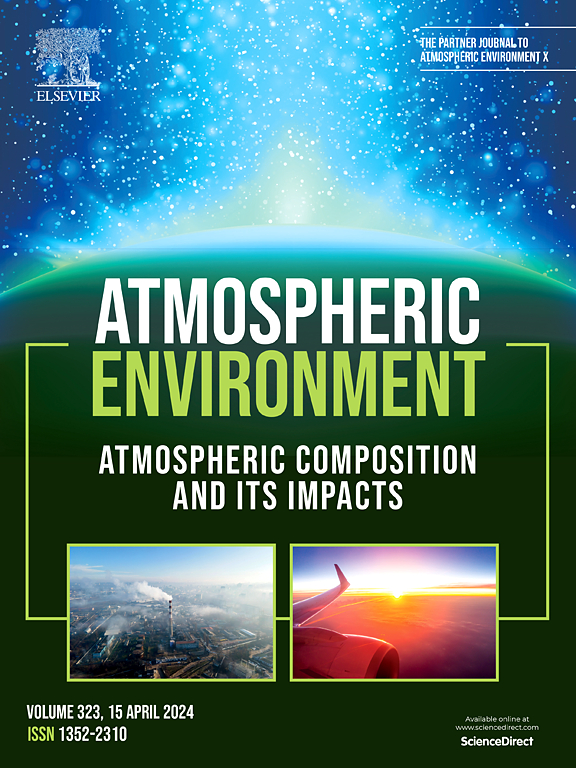Estimating global anthropogenic carbon dioxide emissions using satellite observations and machine learning methods
IF 3.7
2区 环境科学与生态学
Q2 ENVIRONMENTAL SCIENCES
引用次数: 0
Abstract
Several countries are working to reduce their anthropogenic CO2 emissions to meet the goals of the Paris Agreement. However, evaluation of the carbon reduction efforts is hindered by the larger uncertainties in the currently available datasets. Therefore, it is imperative to explore new efficient and reliable methods to estimate carbon emissions accurately. This study proposed a novel method to estimate global gridded anthropogenic CO2 emissions using satellite datasets. The methodology included the development and integration of two machine learning models, i.e., RXCO2 (Reconstruct XCO2) and REMI (Reconstruct EMIssion), to achieve the objective. RXCO2 utilized the CO2 products from the Copernicus Atmosphere Monitoring Service (CAMS) model and the Orbiting Carbon Observatory 2 (OCO-2) satellite to produce a daily global long-term regular gridded column-averaged dry-air model fraction of CO2 (XCO2) dataset with a spatial resolution of 1°. The predicted XCO2 dataset was thoroughly validated against the ground-based and satellite-derived XCO2 observations, and good consistency was observed among the datasets. Further, the XCO2 anomalies were derived using the predicted XCO2 dataset and were utilized in the second model (REMI) along with tropospheric NO2 column, nighttime light, and population density to predict annual gridded anthropogenic CO2 emissions at a spatial resolution of 1° for 2021 and 2022. The model achieved high accuracy with a coefficient of determination (R2) of 0.96 and a root mean squared error (RMSE) of 100.3 tons. The predicted results were comprehensively compared with the anthropogenic CO2 emissions provided by established inventories and good agreement was observed among the datasets.
利用卫星观测和机器学习方法估算全球人为二氧化碳排放量
一些国家正在努力减少人为二氧化碳排放,以实现《巴黎协定》的目标。然而,目前可获得的数据集存在较大的不确定性,阻碍了对碳减排努力的评估。因此,探索新的高效可靠的碳排放准确估算方法势在必行。本研究提出了一种利用卫星数据集估算全球网格化人为二氧化碳排放量的新方法。该方法包括开发和集成两个机器学习模型,即RXCO2(重构XCO2)和REMI(重构排放),以实现目标。RXCO2利用哥白尼大气监测服务(CAMS)模型和轨道碳观测站2号(OCO-2)卫星的CO2产品,生成了一个空间分辨率为1°的全球长期规则网格柱平均干空气模式CO2组分(XCO2)数据集。预测的XCO2数据集与地面和卫星XCO2观测数据进行了全面验证,数据集之间具有良好的一致性。此外,利用预测的XCO2数据集导出XCO2异常,并将其与对流层NO2柱、夜间光照和人口密度一起用于第二个模式(REMI),以1°空间分辨率预测2021年和2022年的年格点人为CO2排放量。模型具有较高的准确度,决定系数(R2)为0.96,均方根误差(RMSE)为100.3吨。将预测结果与已建立的清单提供的人为CO2排放进行了综合比较,发现数据集之间的一致性较好。
本文章由计算机程序翻译,如有差异,请以英文原文为准。
求助全文
约1分钟内获得全文
求助全文
来源期刊

Atmospheric Environment
环境科学-环境科学
CiteScore
9.40
自引率
8.00%
发文量
458
审稿时长
53 days
期刊介绍:
Atmospheric Environment has an open access mirror journal Atmospheric Environment: X, sharing the same aims and scope, editorial team, submission system and rigorous peer review.
Atmospheric Environment is the international journal for scientists in different disciplines related to atmospheric composition and its impacts. The journal publishes scientific articles with atmospheric relevance of emissions and depositions of gaseous and particulate compounds, chemical processes and physical effects in the atmosphere, as well as impacts of the changing atmospheric composition on human health, air quality, climate change, and ecosystems.
 求助内容:
求助内容: 应助结果提醒方式:
应助结果提醒方式:


